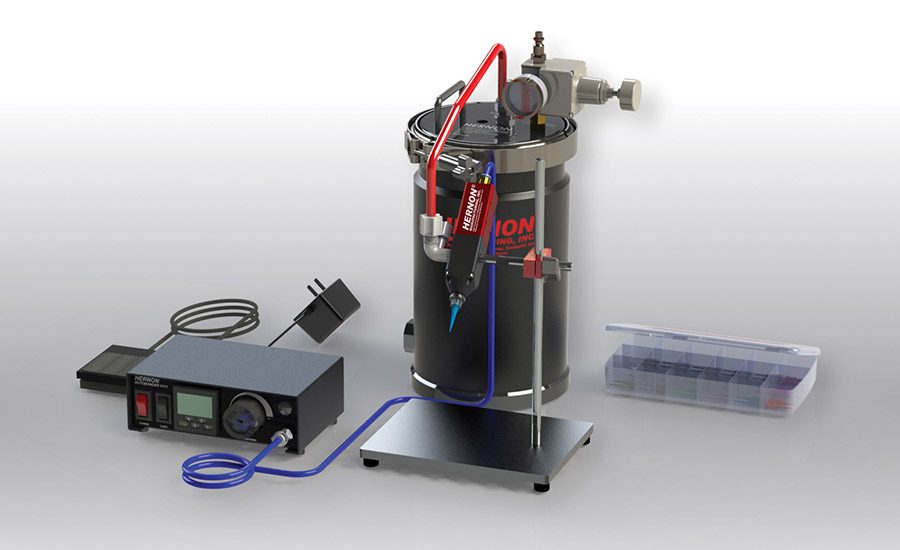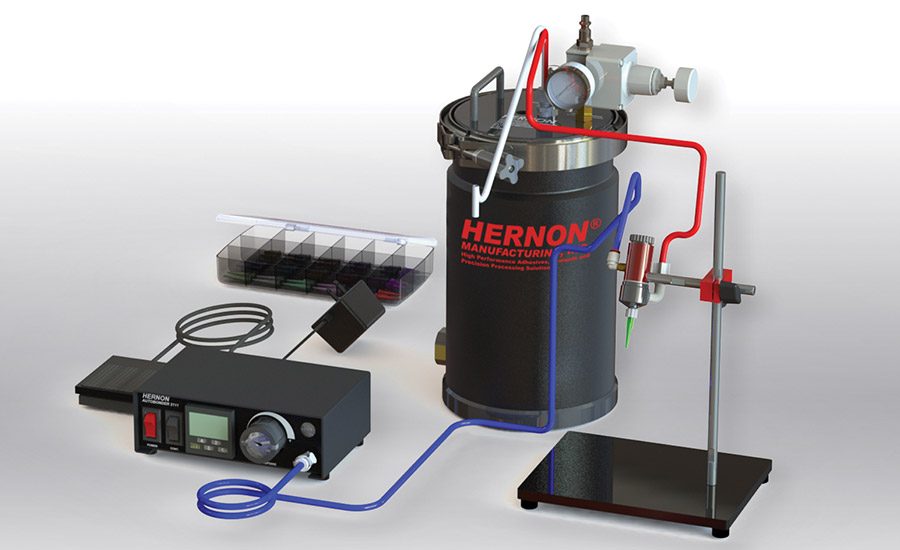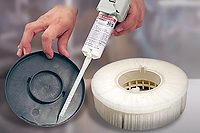Focus On: Threadlockers Lock it Down
Threadlockers lock things in place. But they have other benefits as well, such as preventing fluids from leaking and corrosion from occurring.




Manufacturers of the small engines used to power landscape equipment know that proper assembly can make or break their machinery—and their reputation. These engines are integrated into tools that take a beating; hence, they must be manufactured to require few (if any) repairs to ensure customer satisfaction.
Whether they are a commercial landscaper or a homeowner purchasing the outdoor power equipment, such as a lawn mower, blower or chain saw, the owner expects the tool to deliver maximum power and minimal headaches. While most owners need the equipment to be reliable and easy to operate, they often only think about the tools’ small engines when an issue arises. A loose nut or bolt frequently causes a small engine to die or overheat, and thus interrupt the tool’s service life. Therefore, manufacturers need to pay particular attention to even the smallest parts.
Because small engine assemblies are used in some pretty rough conditions, including heat cycling, vibration and shock, meticulous care needs to be taken when assembling nuts and bolts during the manufacturing process. After many hours of operation (and the occasional banging, dropping and other abuse), the screws and bolts in a small engine can lose torque and begin to back out if they weren’t properly assembled. To avoid this issue, manufacturers are now using threadlockers, which control bolts from loosening and dramatically increase the reliability of threaded assemblies in small engines.
Threadlocker Basics
Threadlockers are high-strength anaerobic compounds; that is, they cure in the absence of oxygen. For close-fitting, metal-to-metal retaining applications, they increase the strength of the assembly and eliminate fretting and galvanic corrosion.
It is important to note that anaerobic threadlockers will not cure without the presence of metal. In addition, their use on some plastics may cause them to experience stress cracks. Therefore, for plastic fasteners or tamper proofing the heads of screws, it is recommended to use a modified cyanoacrylate,* because it will rapidly cure in plastic joints.
Before threadlocker compounds were developed, small engine manufacturers used mechanical locking devices, such as split washers and nylon nuts. In small engine assemblies, intended to prevent loosening that occurs in most threaded assemblies, these fasteners would fail; small parts began to loosen over time under the typical vibrations encountered in small engines. In addition, manufacturers began to experience issues with thermal expansion, which was leading to improper torque, as well as issues related to rust.
A single-component threadlocker adhesive helps to avoid these issues when it is applied to each part. Threadlockers do exactly what they sound like they should do: they lock things in place. But they have other benefits, too, like preventing fluids from leaking and corrosion from occurring.
During the small engine assembly process, manufacturers apply medium- and high-strength anaerobic compound threadlockers to the threads of fasteners (such as screws and bolts) to prevent them from loosening. After applying a small amount of the chemical formula, the bolts are torqued to specifications. In a small engine, not only does keeping these parts in place prevent fluids from leaking and corrosion from occurring, it also keeps the bolts in the small engines from loosening and causing mechanical failure.
Choosing a Formulation
Hernon Manufacturing offers a complete line of Nuts N’ Bolts threadlockers, which are suitable for a range of applications—from delicate electronic assemblies to heavy industrial equipment. Some types of threadlockers are low-strength solutions that can easily be removed for assemblies that require servicing. For lawn movers, snow blowers and other small engines that experience constant vibration, some parts require a high-strength solution that will never come apart.
When assembling a small engine, one threadlocker for affixing the ring gear to the shaft and to install bearing caps is Nuts N’ Bolts 425. This single-component anaerobic threadlocking material is thixotropic and develops medium- to high-strength cures when confined in the absence of air between close fitting metal surfaces.
Improper assembly of the differential cover in an engine can cause the gasket to shift or the cover to warp. Nuts N’ Bolts 423 is suitable for less-active substrates, such as a stainless steel and plated surfaces, as in the situation with the differential cover mounting bolts, case assembly bolts, and transmission pan bolts. Nuts N’ Bolts 423 is also a single-component anaerobic thread locking material, but one with medium strength.
The threadlockers can also be used on housing bolts in conjunction with Hernon EF Primer 50. This environmentally friendly primer is a single-component, non-CFC solvent-based product designed to promote the cure speed of Hernon anaerobic adhesives and sealants. Hernon’s high-strength, single-component anaerobic threadlocker, Nuts N’ Bolts 427, is ideal to torque converter bolts. Each of these products was engineered for a specific application type, which, in small engine assemblies, will not only protect the fasteners from corrosion, but also lock them in place to help resist shock, vibration, and temperature variance.
Reduce Cost and Facilitate Manufacturing Process
After slumping demand over the past five years, the landscaping services industry is forecasting a rapid recovery, due to renewed construction activity and increasing disposable income growth of households. More lawn service business means more manufacturing of outdoor power equipment—and the need for faster, more efficient production.
Manufacturers are focusing on using the right adhesives to keep the key components of a small engine secure. Many manufacturers use the Nuts N’ Bolts line of threadlockers and the Autobonder 2111 dispensing system, which includes the Sureshot 2220 valve system to accurately dispense controlled amounts of threadlocker during small engine assembly. The valve system can accurately dispense controlled amounts of most low- to medium-viscosity fluids, such as threadlockers. The seal-less design incorporates an inert polymer diaphragm that isolates the actuator from the valve. The adjustable open/close stroke means very fast response and positive shutoff. Sureshot 2200 valves can be integrated into the Autobonder 2111, a pneumatic dispensing control system.
The Autobonder 2111 system ensures consistent results for even the most challenging applications. Using the latest dispensing technology, the machine is easily programmable and has precise controls. Capable of being used in a range of possible applications, the Autobonder 2111 has a repeatability of 0.02 mm for precision dispensing. In addition, high resolution of 0.001 mm and HMI programming makes the system a total solution for manufacturers looking to automate assembly processes.
For more information, phone (800) 527-0004 or visit http://hernon.com.
Looking for a reprint of this article?
From high-res PDFs to custom plaques, order your copy today!







